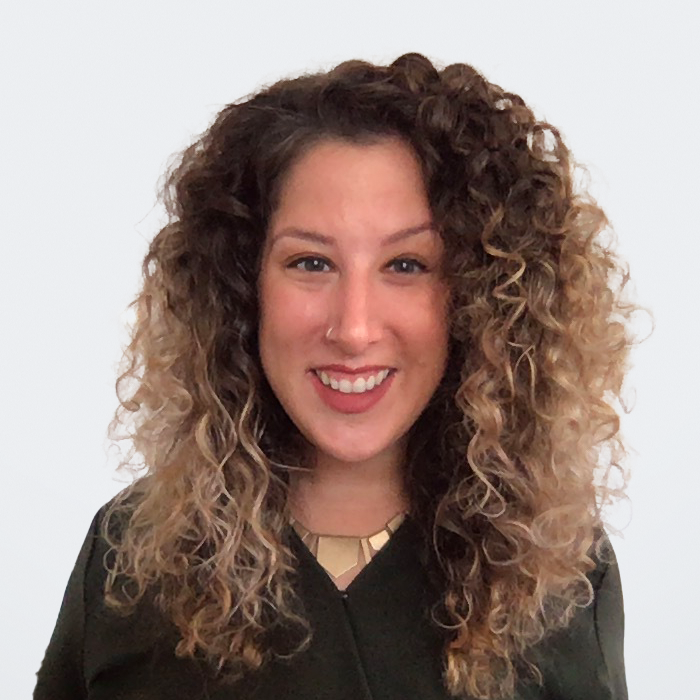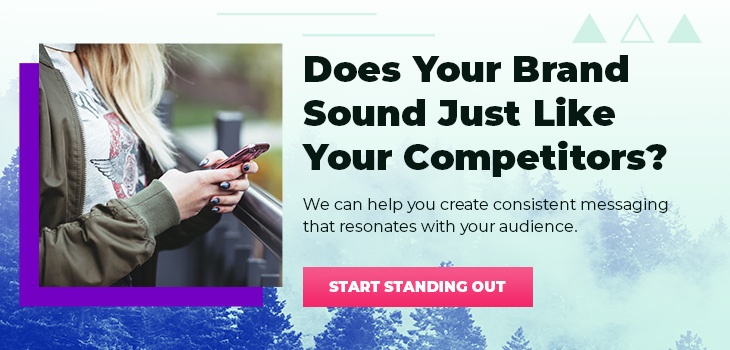You know your messaging could be better. Whether you think it needs a total overhaul or just a few tweaks, adjusting your marketing message requires some strategic thinking and a proven framework. Which is why many businesses opt to work with an agency or expert to ensure they’re creating something that resonates with their target audience and accurately reflects their brand identity.
However, there’s one thing that might give you pause when considering this route: the messaging workshop.
Messaging workshops are a necessary part of defining your brand within a messaging framework so you come out with a clear, concise message for potential customers. But if you’ve never been part of one before, it’s understandable to be curious about what you’re getting into before you sign your contract.
In this post, we’ll dispel all wariness and common misunderstandings about messaging workshops by walking you through why they’re essential and what typically happens during a workshop. Here to help is Kate Cygan, Director of Client Services and overall marketer extraordinaire.
Why a Workshop?
Messaging workshops take time; it’s just their nature. So as you peruse your options, you might be wondering why you have to participate in a two-hour, half-day or sometimes even full-day workshop just to decide on your brand messaging.
The simple answer is because it takes time. You need to include all the stakeholders in your organization, consider multiple options and viewpoints, discuss the best approach to your communication strategy and get to the heart of how you want your brand to be perceived. That can’t be accomplished in a 30-minute Zoom call.
“The workshop helps you clarify your brand’s core message and value proposition,” Kate explains. “This clarity is crucial for effectively communicating with your target audience and ensuring they understand what you offer.”
She adds this is also where you clarify your customer’s needs. The workshop encourages you to shift your focus from discussing your business to addressing your customer’s problem and putting them at the heart of your messaging.
“Understanding and addressing customer pain points can lead to more effective marketing and higher customer engagement.”
At Lone Fir, we use the StoryBrand Framework to craft our clients' messaging. The messaging workshop allows us to collaborate with you to ensure everything in your strategy is just right. We can get to the heart of your brand and choose the right language to reflect your mission, vision, values and solution in every piece of copy you create.
“StoryBrand focuses on understanding and addressing customer needs,” Kate says. “This customer-centric approach can lead to more meaningful connections with your target audience, which is essential for successful marketing.”
Now that you understand why a messaging workshop is important and requires a time investment, let’s dive into what will actually happen on workshop day.
Workshop Day
It’s time to get excited because it’s workshop day! Depending on how you work with your agency, your workshop might be in-person or via video call. At this point, you’ll know exactly how long it will take — Lone Fir’s workshop’s are two hours via Zoom — and who needs to be in the meeting.
Once you’re all gathered and introductions have been made, you’ll dive into the workshop.
Part 1: Discovery
You’ve likely gone through a good bit of discovery during the sales process and onboarding and this shouldn’t be a repeat of information. Your workshop leader will take this time to dig a little deeper into your brand based on what they’ve learned about you from your previous calls with sales and customer service.
The goal of this phase is for the workshop leader to understand exactly what problems your customers are facing, how you solve it and how you want to communicate that solution.
“Every business is unique with specific challenges, audience segments and proof points,” Kate says. “In a discovery call, the facilitator can gather essential information about your business and tailor the workshop to more effectively address your specific needs and goals.”
Without this discovery time, you run the risk of your guide not properly understanding your business and missing the mark on key messages. Discovery helps clarify any uncertainties and ensures the workshop is based on accurate information, so be sure to take the time to offer helpful collaboration in this stage.
Part 2: Define Your Message
This is the meat and bones of your workshop day. You’ll go beyond the fundamentals of your brand and into the nitty gritty as you brainstorm how to communicate your differentiation, positioning statement, the benefits of your service and why people should trust you as their guide.
Different agencies will use different approaches to tackle these elements. As mentioned earlier, we use the StoryBrand Framework to guide our workshops and develop a BrandScript for clients.
The key to successfully defining your message is to have an open dialogue with your workshop leader. “The biggest thing is to come with an open mind and plan on being collaborative,” Kate adds. “Be open to sharing your insights, challenges and goals. The more information you provide, the better we can tailor the messaging to your needs.”
She adds that asking questions is highly encouraged during this process. It’s important to seek clarification on any concepts or strategies you don’t understand so that you can successfully implement your messaging after the workshop.
As you get into the weeds of your brand message, it can be easy to let those muddy waters seep into your messaging and make it too confusing. Kate offers this piece of advice:
“Try to embrace simplicity. A key aspect of StoryBrand is clarity. Embrace the idea of keeping your messaging simple and easy to understand. Avoid jargon or technical language that may confuse your audience and instead focus on how your product or service will help them overcome a problem.”
Part 3: The Deliverable
After you’ve spent the day discussing your brand and making sure your messaging is just right, your workshop leader will take all the information they’ve gathered to create the final deliverable. In our case, the StoryBrand BrandScript.
The BrandScript will clearly outline the key areas of your messaging strategy, including:
- Your ideal customer
- What problem you solve
- Benefits of using your service
- How to work with you
- Your one-liner (also called the “elevator pitch”)
With this strategy in hand, you can ensure all of your sales and marketing materials are aligned with how you want to position your brand.
“Internal alignment is of the utmost importance,” Kate says. “Ensure that all key stakeholders within the company are on the same page regarding your messaging. This alignment will help maintain consistency in communication across different departments.”
Whether you decide to continue working with your agency or to take your strategy and implement it on your own, there are a few ways you can ensure you get the best results.
- Train your team members. Educate your sales and marketing teams on your BrandScript so they can deliver a consistent, compelling message to the leads and clients they work with.
- Focus on the customer journey. Use your BrandScript to map out the customer journey and identify key touchpoints to use your messaging that have the highest likelihood of success.
- Update your website. Apply the principles of StoryBrand to your website design and content to help foster buy-in among your audience. Make sure your messaging is clear, the navigation is intuitive and your call to action is prominently placed throughout each page.
Working with An Agency
If you don’t want to take on implementing your messaging strategy alone, then you can continue working with the agency that developed it. This path offers some unique benefits that can often help you go further with your marketing efforts, especially if you have a small internal team.
“The agency that developed the BrandScript has a comprehensive understanding of your brand, target audience and marketing objectives,” Kate explains. “This knowledge can be paired with their marketing expertise to create consistent and effective marketing campaigns.”
She adds that because the agency developed the BrandScript, they can easily ensure that all marketing efforts — from your website to your emails and beyond — align with your established brand messaging. “Consistency is crucial for building brand recognition and trust among customers.”
Finally, as your company grows and evolves, you might need to update your BrandScript to reflect a shift in scope, services or your audience. The agency that developed your original version can hit the ground running to make changes, so you don’t have to start the workshop process over again.
FAQs
This blog gives you an overview of what a messaging workshop is like and what you’ll accomplish, but we know you probably still have a few questions. Here are some common inquiries we see when discussing messaging workshops with potential clients:
What will I learn?
You’ll learn how to communicate your brand’s value in a way that resonates with your target audience. You accomplish this by thinking strategically about what problems your product or solution solves and what language your audience will relate to most.
Is it really effective for my industry?
It’s not uncommon to wonder if messaging is really necessary for your industry, especially if you’re in a technical field or industry-specific B2B space.
The StoryBrand framework and BrandScript is effective for every industry, no matter who your customers are or how you operate. It helps you hone your message to your unique audience so they feel like you’re speaking directly to them. This engages more people and encourages more conversions.
Will my specific business challenges be addressed?
Yes! During the discovery phase, your workshop leader will take the time to hear and understand your specific business challenges. They’ll consider these as they craft your strategy to ensure it reflects your needs and creates a logical solution within your marketing plan.
Ready to Refine Your Message?
Clear messaging is the foundation of any great marketing strategy. That’s why it’s critical to get messaging right before moving on to other marketing tactics.
At Lone Fir, we use your BrandScript as the foundation of everything we do. To learn more about how we can help you create a messaging strategy, book a call with Amanda!








